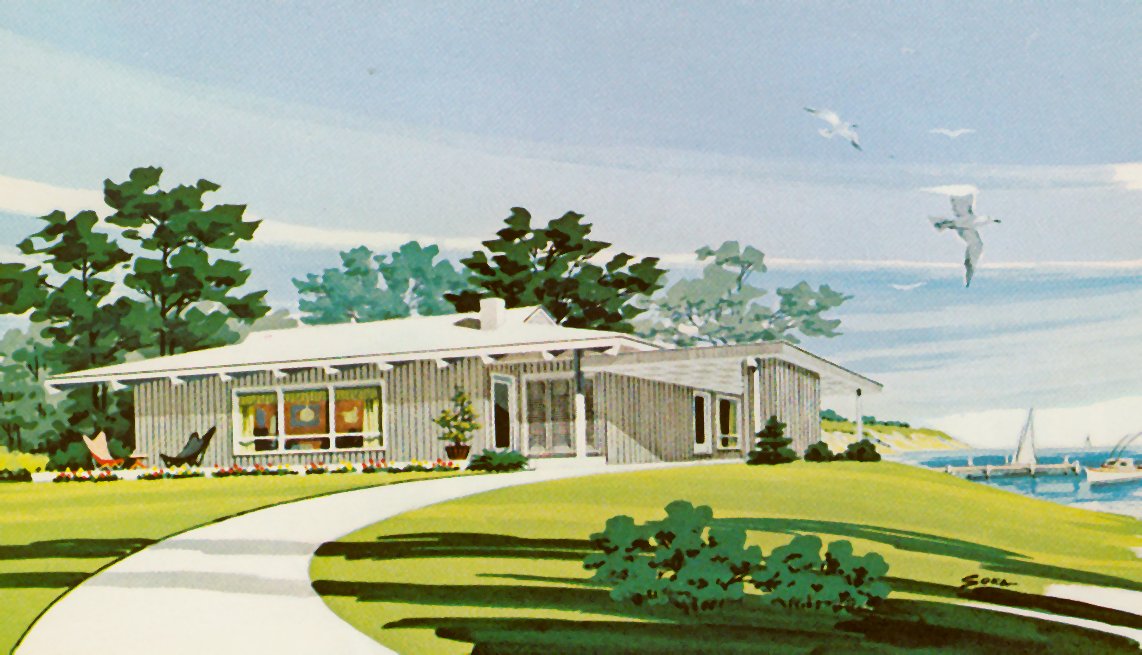 Much as they like to talk about real estate, most people in Montauk these days wouldn’t be referencing a 750-or-more-square-foot house with no AC or winter insulation on a 7,500-square-foot piece of property. The product of a late 1950s collaboration, the 200 or so prefab summer residences were designed by Andrew Geller and Raymond Loewy and marketed by All-State Properties — which had a model home at the 1964 World’s Fair – at Macy’s Herald Square in Manhattan, and locally by the Montauk Beach Development Company at the Carl Fisher office building in downtown Montauk.
Much as they like to talk about real estate, most people in Montauk these days wouldn’t be referencing a 750-or-more-square-foot house with no AC or winter insulation on a 7,500-square-foot piece of property. The product of a late 1950s collaboration, the 200 or so prefab summer residences were designed by Andrew Geller and Raymond Loewy and marketed by All-State Properties — which had a model home at the 1964 World’s Fair – at Macy’s Herald Square in Manhattan, and locally by the Montauk Beach Development Company at the Carl Fisher office building in downtown Montauk.
With its modern-day appliances – the homes included a dishwasher and washer and drier, among other at-the-time luxe amenities for the middle class, which a summer home would have been in the first place – a prototype inspired a 1959 argument at the American National Exhibition in Moscow, called “the Kitchen Debate,” between then-Vice President Richard Nixon and Soviet Premier Nikita Khruschchev. Khruschchev reportedly said, “There is no more truth in showing this as the typical home of the American worker than, say, in showing the Taj Mahal as the typical home of a Bombay textile worker.”
As for the Leisurama’s “leisure” element – a similar architectural illustration from the era depicts a wife and children exuberantly rejoicing at the arrival of the family breadwinner in a tail-finned vehicle, most likely for the weekend from his job in the city. In the early 1960s it would have been reasonable to expect the children to have been biking, swimming, and playing board games with other kids in the summer colony while Mom kept them fed and watered and socialized over coffee or cocktails with her own friends. Ah, for the good old days!
Full disclosure: The majority of Leisuramas, most of which were built in what is called the Culloden Shores development near Block Island Sound, were not directly on the waterfront, and they did not include docks, boats, and the like. It is also unlikely that the full-scale vegetation seen in this illustration would have survived the salty, wind-blown environment.
However, they did provide easy living, access to a private beach, and came fully furnished from Macy’s-issue sofas and beds, linens, cookware, and flatware all the way down to a toothbrush for each and every family member. The starting price for the basic model was less than $14,000, with financing and as little as $490 down. Today they go for close to $1 million.
Talk about non-buyer’s remorse!
By Virginia Garrison

One Comment
FYI, these houses were not prefab. They were built the old fashioned way, but strictly to one of three designs. My parents bought one at macys in 1965.